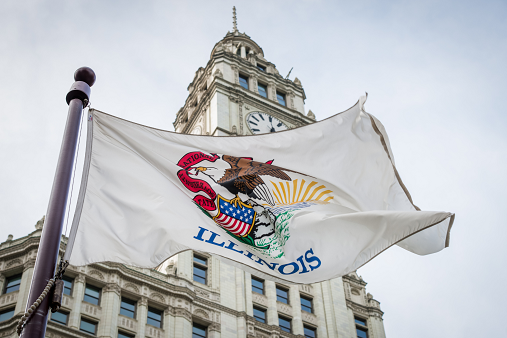Highlights
• DOE’s investment of $6 billion in 33 decarbonization projects – the largest such investment in American history – signifies the integral role decarbonization of industrial business operations has in achieving the U.S.’ net-zero carbon goals
• Most of the projects are located in disadvantaged and undeserved communities and will be required to implement comprehensive Community Benefits Plans to ensure meaningful community and labor engagement and address local pollution
• DOE has scheduled five virtual regional briefings from April 15-23 for communities to learn about and provide input on the selected projects
The U.S. Department of Energy (DOE) Industrial Demonstrations Program (IDP) received a combined $6.3 billion in federal funds from the 2021 Bipartisan Infrastructure Law (BIL) and the 2022 Inflation Reduction Act (IRA) to support the advancement of transformational technologies necessary to decarbonize the U.S. industrial sector.
On March 25, 2024, the DOE announced it would invest up to $6 billion in 33 projects across more than 20 states to decarbonize energy-intensive industries, reduce industrial greenhouse gas emissions, support good-paying union jobs, revitalize industrial communities, and strengthen the nation’s manufacturing competitiveness. These projects represent an overall investment of more than $20 billion, with $430 million from the BIL, $5.46 billion from the IRA and more than $14 billion from the private sector.
Announcement and implementation of these projects is among the clearest signals from the Biden administration to date that decarbonization is not just a buzzword – going forward it is integral to all aspects of business operations in the U.S.’ largest and most important industrial sectors.
The process began in March 2023, when the DOE’s Office of Clean Energy Demonstrations (OCED) opened applications for up to $6 billion of that funding to implement the IDP by accelerating decarbonization projects in energy and carbon intensive industries. According to the White House Fact Sheet, this was to be “the largest investment in industrial decarbonization in American history.” By the August 2023 deadline, 411 applicants had requested over $60 billion in DOE funding.
As part of the IDP, the DOE issued a series of Pathways to Commercial Liftoff reports to provide public and private sector investors with a perspective as to how and when various decarbonization technologies could reach full-scale commercial adoption. On Sept. 18, 2023, the DOE issued three Pathways reports regarding the energy intensive industries targeted for the decarbonization investments. The first of these Pathways reports focused on decarbonizing eight industrial sectors: chemicals; refining; iron and steel; food and beverage processing; pulp and paper; cement; aluminum; and glass. The other two undertook deeper dives into low carbon cement and decarbonizing the chemicals and refining sectors.
The 33 projects selected for IDP award negotiations are in the highest emitting industries where decarbonization technologies will have the greatest impact and that were the subject of the DOE’s September 2023 Pathways reports. They are divided into eight difficult-to-decarbonize industry groups:
- Chemicals and Refining: The seven selected chemicals and refining projects include proposals to upcycle captured carbon to value-added products, create high-quality fuels and materials from recycled products, and replace fossil-fired, high-heat processes with decarbonized fuels. Products to be created include clean fuels for the marine sector, electrolytes for electric vehicle batteries, and high-quality plastics.
- Cement and Concrete: The six selected cement and concrete projects are proposing to use a number of technologies to eliminate CO2 emissions from existing plants while planning for future operations that will be net-negative. These projects will revitalize a sector that has relied on emissions-intensive processes by capturing and sequestering emissions from one of the largest cement plants in the U.S. and implementing chemistry changes to reduce emissions at their source.
- Iron and Steel: The six selected iron and steel projects propose to use emerging technologies, including clean hydrogen-fueled ironmaking facilities, which can eliminate the a major portion of steelmaking emissions Implementation of these technologies will allow for phasing out more traditional carbon-intensive coal fueled production methods.
- Aluminum and Metals: The five selected aluminum and metals projects focus on decarbonizing the U.S. primary aluminum industry as well as recycling approaches for both aluminum and copper. These projects involve production of high-purity aluminum needed for the defense and energy sectors, as well as recycled aluminum for the food and beverage industry and copper for semiconductors and electric vehicles.
- Food and Beverage: The three selected food and beverage projects propose to implement energy efficiency and electrification solutions for low- to medium-temperature process heat; and are expected to be replicable by others.
- Glass: The three selected glass projects propose to confirm that electric/fuel hybrid furnaces can be utilized cost effectively to produce low-emission glass bottles, tableware, and food packaging. It is anticipated that these projects will provide a blueprint that can be followed by other heat-intensive industrial processes.
- Process Heat: These two projects will use electric boilers and electric steam production to reduce emissions associated with process heating across a wide range of industries and should also provide a roadmap others can follow for using these technologies to reduce emissions.
- Pulp and Paper: One pulp and paper project was selected aims to demonstrate improvement of energy efficiency using a membrane for a separations process instead of heat. If successful this technology should be adaptable for use for a number of other industrial uses.
According to the DOE, the funded projects will add tens of thousands of jobs while cutting carbon emissions by an average of 77 percent. The report said: “Together, the projects are expected to reduce the equivalent of more than 14 million metric tons of carbon dioxide (CO2) emissions each year – an amount equivalent to the annual emissions of 3 million gasoline-powered cars.”
Most Projects Located in Underserved Communities
Nearly 80 percent of the projects are located in disadvantaged communities. Pursuant to President Biden’s Justice40 Initiative, these projects will offer significant opportunities for investment in good jobs and clean air in the communities that need them. Each project is also expected to develop and implement a comprehensive Community Benefits Plan to ensure meaningful community and labor engagement.
When it announced the selected projects, the DOE noted, “Applicants were required to describe how their proposals would provide the greatest benefit to the greatest number of people in a facility’s location, recognizing the opportunity this funding provides to address pollution for those disproportionately affected by industrial sector emissions and begin remediating existing social, economic, and health burdens.” Selectees will be required to develop and implement strategies and methods of accountability to ensure meaningful, two-way community and labor engagement; diversity, equity, inclusion, and accessibility; benefits to the surrounding community, and; quality jobs and workforce development.
The OCED is rolling out a series of national and regional virtual meetings as part of this overall engagement process. A national Industrial Demonstrations Program briefing took place on March 27 when the selections were announced and five virtual regional briefings are scheduled from April 15-23 to provide a local forum for communities to learn about and provide input on the selected projects.
The OCED also plans to host a series of virtual briefings, not yet scheduled, to provide sector-specific insights that will “provide information about the selected projects, the decarbonization levers used, and next steps for the industry to decarbonize.”
For more information, please contact the Barnes & Thornburg attorney with whom you work or Bruce White at 312-214-4584 or bwhite@btlaw.com.













